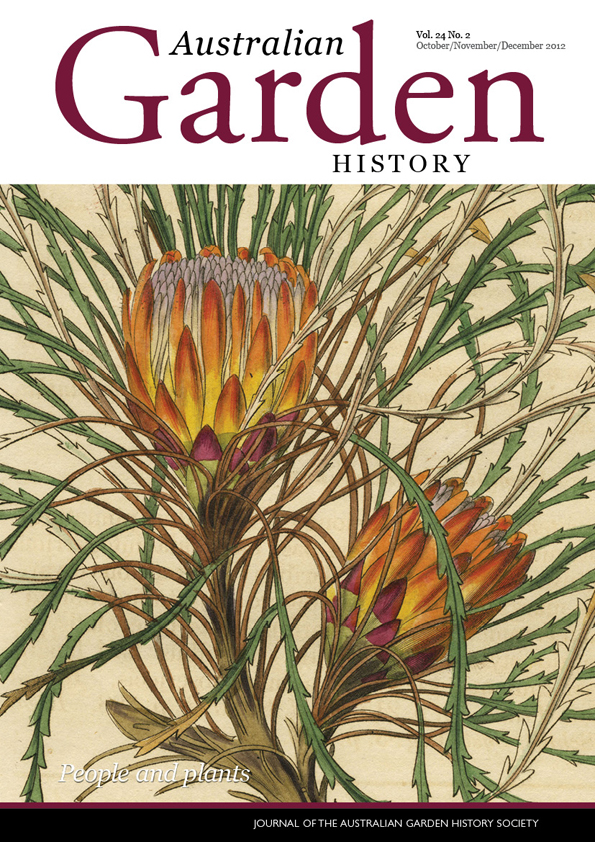Contents
Garden plants and wildflowers in Hamlet John Dwyer
Shakespeare’s plays are grounded in a world of plants. Many are familiar ‘volunteer’ plants in Australia today, yet the multi-layered meanings they carried for an Elizabethan audience are perhaps less well known.
The French Garden at La Perouse Ivan Barko
During a short stay at Botany Bay in early 1788, the French Lapérouse expedition planted a vegetable garden near the area now referred to as Frenchman’s Bay – traces were still visible in 1824 but an exact location remains to be determined.
The rural garden at Oakhampton: a century in the making Lesley Garrett
Oakhampton, near Manilla, north of Tamworth, NSW, sustained by generations of the Nixon family, is a fine example of the large, diversified garden once common in rural Australia.
World War Two: the Commonwealth Vegetable Seeds Committee Megan Martin
Protecting and expanding the seed harvest during World War Two were the activities of the little-known wartime organisation, the Commonwealth Vegetable Seeds Committee.
A slide odyssey: the Noel Lothian collection Ed McAlister
The Herculean task of sorting and labelling the 22,000 slides in Noel Lothian’s collection has now been completed, with 9000 images selected for retention. This veritable treasure trove of great value, coverers the period from approximately 1952 until 2004.
Heart and mind: linking gardens, plants, and history John Viska
Perth-based plant enthusiast John Viska has recently been elected chair of the West Australian Branch. In this profile he recounts his love of plants, gardening, and history.
A parting gift
Members bid farewell to our much-loved Executive Officer Jackie Courmadias in the Red Rotunda of the State Library of Victoria on 30 August 2012.
Profile: Phoebe LaGerche-Wijsman
Executive Officer Phoebe LaGerche-Wijsman brings a rich and complementary suite of skills to the AGHS as well as a background with roots in Australian garden history itself.
In praise of working bees Fran Faul & Malcolm Faul
Working bees should be a major tool for the AGHS to work towards this objective. A working bee is a way to say to an owner or custodian that they manage a significant asset, one that it is worth conserving, and that the Society – and hopefully the wider community – values this asset.


